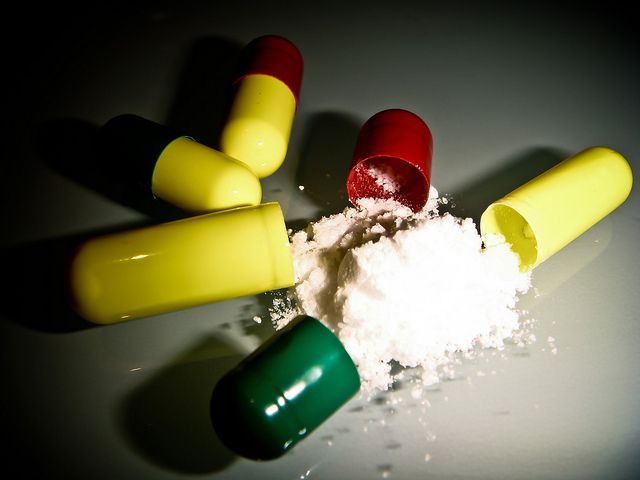Heroin Overdose Seems Unlikely When Painkillers Come With A Prescription

Risks rise when people who don’t have a prescription for opioid-based painkillers abuse the drugs, primarily because their attitudes toward overdosing are too lax, a new study finds.
While heroin comes with an air of lethality, painkillers that make use of the same base drug fail to do so. Researchers from New York University's Center for Drug Use (CDUHR) and HIV Research and the NYC-based National Development Research Institutes (NDRI) are now finding people who abuse nonmedical prescription drugs fail to educate themselves on the risks of overdose and the resources they could rely on if one were to happen.
“We found that despite significant overdose experiences, nonmedical PO [prescription opioid] users were uninformed about overdose awareness, avoidance, and response strategies,” said Dr. Pedro Mateu-Gelabert, lead investigator with CDUHR and NDRI, in a statement.
Mateu-Gelabert and his colleagues point to the ballooning rates of prescription drug abuse in New York City over the last decade as urgent need for change. According to the city’s Department of Health, death rates for unintentional opioid-related overdoses tripled between 2000 and 2011. Heroin overdoses are also increasing with alarming consistency.
Unfortunately, the attitude gap between prescription drugs and heroin is largely explained by self-image. The people who take prescription drugs, even in unsafe quantities without their doctor’s endorsement, don’t see their chances of overdose as equaling those of heroin users. Something is lost in translation between the street and the prescription, even if the mode of consumption and dosage are the same.
"Many participants drew clear distinctions between nonmedical PO use and heroin use, and even those who transitioned to heroin tended to maintain identity-based distinctions between themselves and those they perceived as 'junkies,'” lead author and CUNY sociologist David Frank explained.
In their study, the researchers recruited 46 people between the ages of 18 and 32 who lived in the New York City area. They tested their knowledge about finding help for someone who overdosed and knowing which medicine was available to reverse the effects. The results were disappointing: The highest-risk group demonstrated the least knowledge about how to take care of an overdose.
When surveyed about treatment, participants described methods that relied on folk cures, like throwing cold water on the person or slapping them to wake up. Few recognized the importance or even the presence of naloxone, a drug that blocks heroin’s effects in the brain. And when the researchers probed into subjects’ use of harm reduction organizations and syringe exchange programs, they realized how essential the prescription side of the drug abuse was to people’s reluctance to call themselves “junkies.”
"Their desire to uphold this distinction affected their willingness to utilize such services, which are often stigmatized,” Frank said.
Overdose on prescription drugs is dangerous enough, but researchers also fear the transition from POs to heroin. Fortunately, more than half of the subjects in the study had completed some college, meaning high schools and universities could develop prevention programs that educate students on the dangers. The end goal, as the experts see it, is to break the stigma associated with seeking help for drug abuse and get education leaders to reframe its presence in the classroom as one of education, not endorsement.
Source: Frank D, Mateu-Gelabert P, Guarino H, et al. High risk and little knowledge: Overdose experiences and knowledge among young adult nonmedical prescription opioid users. International Journal of Drug Policy. 2014.



























